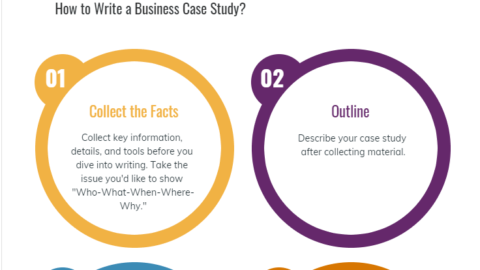Know Which Data Types Are at Risk From Internal Threats
Any activity that potentially endangers data confidentiality, integrity, or availability is considered a data security threat. Hackers, insider threats, natural disasters, human mistakes, and other data security risks can occur and threaten data security. Data breaches can harm enterprises and customers, including financial losses, compromised identities, and reputational damage. Companies must use due care to safeguard their assets and ensure that they have a system in place that will reduce data security and internal threats through employee training, network vulnerability monitoring, and other measures.
Table of Contents
What Are Internal Threats?
There are several security concerns that organizations must contend with, including internal threats that come from within their ranks. Internal attacks can jeopardise sensitive information and pose severe threats to data security. One of the most crucial elements of online life is data security. Without data security, fraudsters would have access to our personal information, financial information, and other sensitive data. Every security executive needs to have a strategy for dealing with insider threats. Digital insider threats can be disruptive and cause your data, intellectual property, or other critical firm information to exit your organization quickly. This could be intentionally to obtain information for financial advantage. Or it could be accidentally by sending something to the wrong person out of carelessness.
According to Verizon’s 2023 Data Breaches Investigations Report, 82% of data breaches had a human component, either by accidentally exposing or leaking data or by making a mistake that gave hackers access to the organization’s systems.
This blog highlights the numerous data types that are especially susceptible to internal threats and the potential repercussions of their compromise.
Customer and Employee Data
Personal information is one of the essential data categories that internal threats can compromise. Customer information, employment records, and personally identifiable information (PII), including names, addresses, social security numbers, and financial information, are all included in this. Identity theft, financial fraud, reputational damage, and legal implications for the organization are all possible outcomes of internal threats that target personal information.

Intellectual Property and Trade Secrets
Trade secrets and intellectual property (IP) might be the targets of internal threats. This covers confidential data, product designs, production methods, business plans, and client databases. Organizations may suffer financial losses, a loss of competitive advantage, and harm to their market position when these priceless assets are in danger.
Financial and Transactional Data
Internal threats are very interested in financial data, including banking information, credit card numbers, and transaction logs. Financial fraud, unauthorized transactions, and financial losses for individuals and organizations can result from unauthorized access to or manipulation of financial data.
Internal Communication and Correspondence
Internal threats can compromise sensitive internal communications like emails, chat logs, and instant messages. Hence, these messages could include private conversations, trade secrets, or organizational strategy discussions. Internal communication breakdowns can lead to the disclosure of confidential information, a breakdown in trust, and reputational harm to the company.
Examples include:
a. Human Error: Mistakes made by employees while handling sensitive data, configuring systems, or following security protocols.
b. Negligence: Failure to follow security best practices or comply with company policies, leaving systems vulnerable to attack or data breaches.
c. Social Engineering: Insiders may inadvertently fall victim to social engineering tactics, such as phishing emails or phone calls, leading to data breaches or unauthorized access.
Business Operations and Systems Information
Critical corporate activities and system information may be the target of internal threats. For example, this comprises information about the network architecture, system setups, login credentials, and access control methods. If this information is compromised, it could result in unauthorized system access, an interruption of business operations, or even potential infrastructure sabotage.
Compliance and Regulatory Data
Organizations frequently keep compliance records and regulatory information on internal policies, legal standards, and industry-specific regulations. Internal threats can alter or remove this data, resulting in non-compliance, legal obligations, and fines from the authorities.
Mitigating Internal Threats to Data
The following procedures should be in place by organizations to safeguard data from internal threats:
- Access Controls. To ensure that only people with permission can access sensitive information, implement strong access controls, the least privilege principle, and regular evaluations of user privileges.
- Employee Education and Awareness. Then, hold thorough security awareness training sessions to inform staff members of the dangers of internal threats. Emphasize the value of data security and ethical conduct.
- Monitoring and logging. So, implement monitoring systems to monitor employee activity, log it, look for abnormalities, and act quickly if anything seems off.
For many organizations, monitoring end-user access to sensitive information. As well as the movement of this data is an essential part of their cybersecurity program. Before the ubiquity of cloud platforms and hybrid work, this was done with an on-premises data loss prevention tool.
- Data Encryption. So, use encryption techniques to safeguard sensitive data from unauthorized access and to preserve its secrecy.
- Incident Response and Investigation. Finally, create a clear incident response strategy to quickly handle and investigate internal and insider threats, ensuring the proper steps are taken to contain the damage and stop further events.
Conclusion on Protection Against Internal Threats
Various forms of data within organizations are seriously in danger from internal threats. Comprehending the vulnerabilities and potential repercussions of different data kinds is essential to create efficient solutions to reduce these risks. Organizations may improve the security of their sensitive data, preserve their operations, and reduce the effect of internal threats on their overall security posture by implementing the necessary security measures.

Mosopefoluwa is a certified Cybersecurity Analyst and Technical writer. She has experience working as a Security Operations Center (SOC) Analyst with a history of creating relevant cybersecurity content for organizations and spreading security awareness. She volunteers as an Opportunities and Resources Writer with a Nigerian based NGO where she curated weekly opportunities for women. She is also a regular writer at Bora.
Her other interests are law, volunteering and women’s rights. In her free time, she enjoys spending time at the beach, watching movies or burying herself in a book.











